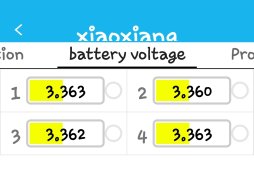Super Dave
New Member
Good day all
I’ve recently purchased a 400ah lifepo4 battery and and when I put a standard 10amp charger on it the BMS shuts down the battery for a minute or so and then opens up to accept the charge for about 5minutes. It kept cycling like that before I went to a 4amp charger and the battery has been just fine with no shutdowns. The battery temperature never went above 22c and the battery is rated to be able to receive up to 100amps of charge. The battery was drained during a capacity test as soon as it arrived so there was no question as to whether or not the battery was fully charged.
Any thoughts?
Thanks, Dave
I’ve recently purchased a 400ah lifepo4 battery and and when I put a standard 10amp charger on it the BMS shuts down the battery for a minute or so and then opens up to accept the charge for about 5minutes. It kept cycling like that before I went to a 4amp charger and the battery has been just fine with no shutdowns. The battery temperature never went above 22c and the battery is rated to be able to receive up to 100amps of charge. The battery was drained during a capacity test as soon as it arrived so there was no question as to whether or not the battery was fully charged.
Any thoughts?
Thanks, Dave






